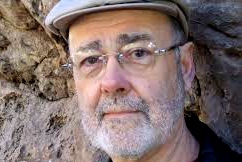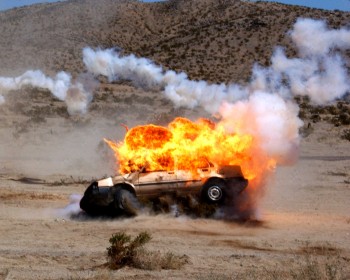“I’d spent time doing my best to stay close to the wall, avoid taking on weight. Slipping away, keeping on the move. Private lives, public lives. We all have them. The unexamined life may not be worth living, but the examined life, any examined life at all, is for damn sure going to surprise, confound and disturb you. Still, here I am, writing this all down, just as I did in the spiral-bound notebook when I was seven.” – Sarah Jane.
 A novel written by James Sallis is always a cause for celebration, if you enjoy high-powered surprises and compressed and insightful writing representing several different genres of crime narrative. Sallis’s three earliest novels, comprising the John Turner trilogy (2003 – 2007), set in Tennessee, are southern gothic and feature a damaged cop and his everyday life over several years as he deals with tragedy, some of it self-imposed, and learns to survive. Drive (2005) and its sequel Driven (2012) are intense and horrific minimalist novels set in the violence of urban Los Angeles and Phoenix. The Killer is Dying (2011), set in Phoenix, features sad and desperate characters and out-noirs most of Sallis’s other noir novels. Others of My Kind, also set in the southwest, emphasizes the importance of accepting what life has dealt us and offers a bit of hope missing from some of the earlier novels. Willnot (2016), the most complex and experimental of Sallis’s novels, with rapidly changing points of view by sometimes unnamed characters, takes place in a town in which there are no churches, by ordinance. In all his novels, Sallis’s characters must come to terms with a troubled past and grow beyond the difficulties and sometimes horrors which have dominated their inner lives to date. His people face life’s big questions on their own as they explore ideas of innocence and guilt, strength and weakness, and the past and its effects on the present and future within their own lives.
A novel written by James Sallis is always a cause for celebration, if you enjoy high-powered surprises and compressed and insightful writing representing several different genres of crime narrative. Sallis’s three earliest novels, comprising the John Turner trilogy (2003 – 2007), set in Tennessee, are southern gothic and feature a damaged cop and his everyday life over several years as he deals with tragedy, some of it self-imposed, and learns to survive. Drive (2005) and its sequel Driven (2012) are intense and horrific minimalist novels set in the violence of urban Los Angeles and Phoenix. The Killer is Dying (2011), set in Phoenix, features sad and desperate characters and out-noirs most of Sallis’s other noir novels. Others of My Kind, also set in the southwest, emphasizes the importance of accepting what life has dealt us and offers a bit of hope missing from some of the earlier novels. Willnot (2016), the most complex and experimental of Sallis’s novels, with rapidly changing points of view by sometimes unnamed characters, takes place in a town in which there are no churches, by ordinance. In all his novels, Sallis’s characters must come to terms with a troubled past and grow beyond the difficulties and sometimes horrors which have dominated their inner lives to date. His people face life’s big questions on their own as they explore ideas of innocence and guilt, strength and weakness, and the past and its effects on the present and future within their own lives.
 Sarah Jane continues these same themes, but here Sallis becomes almost invisible. The novel is the journal of Sarah Jane Pullman from her childhood until she is well into middle age, and though the reader quickly gets to share her life, Sarah Jane steadfastly avoids dealing with problems which often feel much bigger to the reader than they do to her. She hints at events from the past but often prevents the reader from knowing more about the mysteries they create, which soon dominate most of the action – and, in fact, most of Sarah Jane’s life. Time and place shift back and forth as Sarah Jane moves around the country escaping, then beginning again, but refusing to admit to herself or the reader exactly what is responsible for her difficulties. Having grown up on a chicken farm in Selmer, on the border of Tennessee and Alabama, she is the child of parents with their own problems, and in the first five pages of the book, the reader learns that she escaped the farm when she was sixteen. On page three, she suddenly says “I don’t want to say much about my marriage to Bullhead years later and all that. More scars. But I didn’t do all those things they say I did. Well, not all of them anyway.” Then she changes subjects and time frames and leaves these subjects to the reader, unanswered.
Sarah Jane continues these same themes, but here Sallis becomes almost invisible. The novel is the journal of Sarah Jane Pullman from her childhood until she is well into middle age, and though the reader quickly gets to share her life, Sarah Jane steadfastly avoids dealing with problems which often feel much bigger to the reader than they do to her. She hints at events from the past but often prevents the reader from knowing more about the mysteries they create, which soon dominate most of the action – and, in fact, most of Sarah Jane’s life. Time and place shift back and forth as Sarah Jane moves around the country escaping, then beginning again, but refusing to admit to herself or the reader exactly what is responsible for her difficulties. Having grown up on a chicken farm in Selmer, on the border of Tennessee and Alabama, she is the child of parents with their own problems, and in the first five pages of the book, the reader learns that she escaped the farm when she was sixteen. On page three, she suddenly says “I don’t want to say much about my marriage to Bullhead years later and all that. More scars. But I didn’t do all those things they say I did. Well, not all of them anyway.” Then she changes subjects and time frames and leaves these subjects to the reader, unanswered.
 By page four she is describing speeding through a foreign desert with “Oscar,” chatting in a vehicle, not acknowledging that she has had a baby, but indicating to the reader that she took off from Selmer an hour after the baby’s death. She then comments to the reader that Oscar has only an hour left to live, but says no more. A few pages later, she is on the outskirts of St. Louis, living in what sounds like a squatter city with someone who had, possibly, killed a woman in Canada and who was a professor at Antioch, on the run from government agents. By page ten, she is being interrogated by a female court-appointed lawyer, after which the judge gives her a choice – go to jail or join the armed forces. “I saluted the old fart, right then and there.” Three pages after that, she is alive after the explosion of a rocket-propelled grenade, her driver is dead, and she has protected her own life with her own weapon. What makes these fifteen pages so compelling, aside from the obvious curiosity a reader will develop about Sarah Jane’s bizarre life, is Sallis’s ability to create a changing point of view that is completely out of the ordinary but which, in the voice of Sarah Jane, sounds completely normal for her.
By page four she is describing speeding through a foreign desert with “Oscar,” chatting in a vehicle, not acknowledging that she has had a baby, but indicating to the reader that she took off from Selmer an hour after the baby’s death. She then comments to the reader that Oscar has only an hour left to live, but says no more. A few pages later, she is on the outskirts of St. Louis, living in what sounds like a squatter city with someone who had, possibly, killed a woman in Canada and who was a professor at Antioch, on the run from government agents. By page ten, she is being interrogated by a female court-appointed lawyer, after which the judge gives her a choice – go to jail or join the armed forces. “I saluted the old fart, right then and there.” Three pages after that, she is alive after the explosion of a rocket-propelled grenade, her driver is dead, and she has protected her own life with her own weapon. What makes these fifteen pages so compelling, aside from the obvious curiosity a reader will develop about Sarah Jane’s bizarre life, is Sallis’s ability to create a changing point of view that is completely out of the ordinary but which, in the voice of Sarah Jane, sounds completely normal for her.
 Gradually, Sarah Jane’s life begins to take shape for the reader. She works as a chef in several local places, moving upscale as she changes communities. She has several long-term lovers over the years and begins to think she is learning about love. She goes to college, does well, takes an English course in Life Themes, and studies questions like “Can we choose who we are? Can we choose what we believe? Are those questions blood kin?” Though she is thinking more critically, there are complications, and when she is offered a job in a small town on the police force, she accepts, eventually becoming acting police chief. This brings her into direct contact with issues of life and death. “All stories are ghost stories,” she says, “about things lost, people, memories, home, passion, youth, about things struggling to be seen, to be accepted, by the living.” She begins to make sincere commitments to people, but she is dealing with a constantly changing world and has little conception of any sort of pattern in life. People vanish or return, both in real life and in her memory, and she often refuses to acknowledge her own involvement in issues she would prefer to forget.
Gradually, Sarah Jane’s life begins to take shape for the reader. She works as a chef in several local places, moving upscale as she changes communities. She has several long-term lovers over the years and begins to think she is learning about love. She goes to college, does well, takes an English course in Life Themes, and studies questions like “Can we choose who we are? Can we choose what we believe? Are those questions blood kin?” Though she is thinking more critically, there are complications, and when she is offered a job in a small town on the police force, she accepts, eventually becoming acting police chief. This brings her into direct contact with issues of life and death. “All stories are ghost stories,” she says, “about things lost, people, memories, home, passion, youth, about things struggling to be seen, to be accepted, by the living.” She begins to make sincere commitments to people, but she is dealing with a constantly changing world and has little conception of any sort of pattern in life. People vanish or return, both in real life and in her memory, and she often refuses to acknowledge her own involvement in issues she would prefer to forget.
 Numerous other thematic issues arise within this complex story of a woman trying to sort out her life. Though it is presented as the journal of Sarah Jane – and it works as a disorganized journal filled with memories from changing time periods – author Sallis’s own presentation and organization of Sarah Jane’s issues are so effective, and the conclusion so filled with ironies, that many readers will gasp when they reach the ending. Ultimately, every aspect of this novel is a tribute to the power of language, and as Sarah Jane looks through her collection of papers, she muses about “how some documents bolster what we know and believe, some fly in the face of it…[Each] sentence, each document is a small revolution, tearing into the one before, [and] reshaping it.” Here the sentences for the entire novel are constantly reshaping the cumulative information the reader has assembled throughout, and what you end up with is a stunning novel with an unpredicted and brilliant ending, an ending which might change significantly if the reader goes back, with all the cumulative knowledge of the whole book, and rechecks some of the information on which original impressions were formed. Sallis has created a literary wonder here.
Numerous other thematic issues arise within this complex story of a woman trying to sort out her life. Though it is presented as the journal of Sarah Jane – and it works as a disorganized journal filled with memories from changing time periods – author Sallis’s own presentation and organization of Sarah Jane’s issues are so effective, and the conclusion so filled with ironies, that many readers will gasp when they reach the ending. Ultimately, every aspect of this novel is a tribute to the power of language, and as Sarah Jane looks through her collection of papers, she muses about “how some documents bolster what we know and believe, some fly in the face of it…[Each] sentence, each document is a small revolution, tearing into the one before, [and] reshaping it.” Here the sentences for the entire novel are constantly reshaping the cumulative information the reader has assembled throughout, and what you end up with is a stunning novel with an unpredicted and brilliant ending, an ending which might change significantly if the reader goes back, with all the cumulative knowledge of the whole book, and rechecks some of the information on which original impressions were formed. Sallis has created a literary wonder here.
ALSO reviewed here: DRIVE, (James Sallis, DRIVE–the film), DRIVEN, THE KILLER IS DYING, WHAT YOU HAVE LEFT (The John Turner Trilogy), OTHERS OF MY KIND, WILLNOT
PHOTOS. The author’s photo appears on https://www.npr.org/
The RPG attack is from https://nara.getarchive.net/
The Eggs Benedict from one of the local lunch places where Sarah Jane works is shown on http://lobstalandrestaurant.com
The image of journaling may be found on https://www.thebalancesmb.com/
